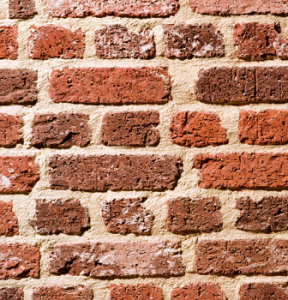Call for Journal Contributions for Interstices #14: Immaterial Materialities – Materiality and Interactivity in Art and Architecture
 Materiality has recently claimed centre stage in architectural discourse and practice, yet its critical meaning is ever receding. Tropes like material honesty, digital materiality, material responsiveness and dematerialisation mark out an interdisciplinary field where scientific fact and artistic experimentation interact, and where what in fact constitutes materiality is constantly re-imagined. As a reaction to developments in science, materiality came under scrutiny with the emergence of nineteenth century German aesthetics and the early avant-garde projects. Initiating an epistemic shift in art
Materiality has recently claimed centre stage in architectural discourse and practice, yet its critical meaning is ever receding. Tropes like material honesty, digital materiality, material responsiveness and dematerialisation mark out an interdisciplinary field where scientific fact and artistic experimentation interact, and where what in fact constitutes materiality is constantly re-imagined. As a reaction to developments in science, materiality came under scrutiny with the emergence of nineteenth century German aesthetics and the early avant-garde projects. Initiating an epistemic shift in art
and architecture, these works pointed point to the connection between the concrete material properties of objects and their interaction with the inhabitant through psycho-physiological effects. These ideas re-emerged transformed in the work of the Neo-avant-garde of the 1960s and 70s, and surfaced again in contemporary architectural debates.
ATMOSPHERE+EXPERIENCE Gernot Böhme thematizes the idea of ‘immateriality’ under the heading of ‘atmospheres,’ which he sees as the fundamental concept of a new aesthetics in architecture. Similar considerations on our relationship with atmosphere and weather have informed recent projects, which deploy materials as mediators or activating agents that probe the relationship between audience/user and the physical environment: Spatial investigations with phenomena-producing materials interact with audiences, and ‘weather architectures’ (Hill), or ‘atmo architectures’ (Sloterdijk), technologically re-create nature as spatial experience and spectacle (Diller and Scofidio).
MATERIAL POLITICS Traditional materials such as timber have been re-imagined through new technologies and connect the present to the material traditions of regional architecture. In East Germany, material experimentation with cast concrete generated an aura of cosmopolitanism that challenged the visual monotony of the iconic ‘Plattenbauten’ promoted by the government (Ulrich Müther); whereas in 1950s Bosnia, Juraj Neidhardt argued that a systematic re-arrangement of architectural elements could facilitate an interactive relationship between the heritage built fabric and the new Communist society.
MATERIAL TECHNOLOGY+AESTHETICS Architectural experiments in material-oriented computational design explore the design potential of conventional construction materials. Waste, artificial and natural materials are fused chemically to produce new composites with changed material and aesthetic properties that replace the traditional visual language of tectonics and give rise to a plastic aesthetic that rejects discrete structural elements in favour of homogeneity and gradient.
MATERIAL REFERENTS In contemporary art, Liam Gillick uses architectural elements that reference the universal modernism favoured in corporate architecture: plexiglas, steel, and colour aluminium. These material fragments can be read as « partial images that call to mind a range of other moments and environments » (Verhagen). It is precisely this
« calling to mind of other moments and environments » that Philip Ursprung detects in Hans Danuser’s photographic representations of Peter Zumthor’s architecture – images that evoke seemingly incompatible associations with the problematic, post-industrial concrete architecture of Alpine power plants.
All these approaches probe boundaries – between material and immaterial, art and science, practice and theory, representation and experience, tradition and innovation, and producer/object/user, giving rise to the following concerns:
– What is the validity of different approaches to materiality in relation to the vital problems of our time?
– Where do materials allow us to cross disciplinary, cultural, or other boundaries?
– Can materials be deployed to create environments which predict user behaviour and control social relations and experiences?
– Which trans-historical correspondences can be detected in contemporary approaches to materiality, and how do these challenge, imitate and expand on previous thinking?
For the refereed part, we welcome submission of 5000 word papers, and visual submissions with an accompanying text of approximately 500 words.
For the non-refereed part, we welcome papers up to 2500 words, and project reports and reviews of up to 1000 words related to the issue theme.
Please visit the website and check out the ‘Notes for Contributors’ for details about the reviewing process, copyright issues and formatting:
http://interstices.ac.nz/.
Please send your submission to Sandra Karina Löschke (sandra.loschke@uts.edu.au) by 3 March 2013. Authors accepted for the reviewing process will receive confirmation and a schedule in mid-March and the journal will go to publication in November 2013.
URL de référence : http://arthist.net/archive/4431

Leave a Reply
You must be logged in to post a comment.